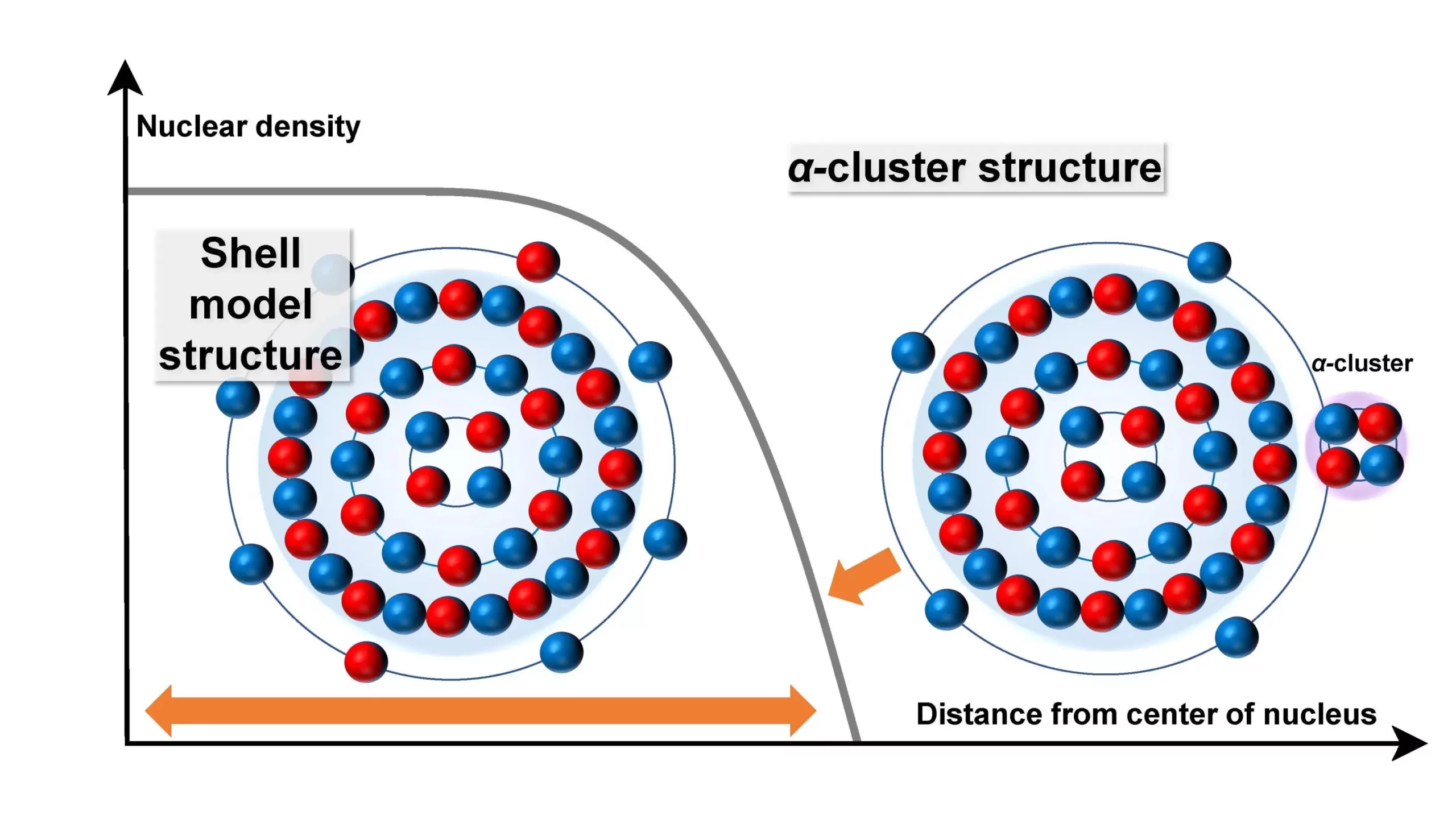The intricate dance of particles that make up the universe often eludes our perception, yet physicists constantly probe deeper into this enigmatic domain. Recent revelations from Osaka Metropolitan University (OMU) are shedding light on the complexities of atomic nuclei, suggesting a fluidity in their structures that challenges long-held scientific beliefs. This dynamic exploration of titanium-48—the most prevalent isotope of titanium—serves as a pivotal case study in understanding how the nucleus transforms under various conditions.
The Intriguing Case of Titanium-48
Titanium-48, characterized by its 22 protons and 26 neutrons, has been scrutinized for its potential organizational frameworks: the conventional shell model and the alternative alpha-cluster model. The former presents a symmetrical arrangement, while the latter introduces an asymmetrical structure marked by alpha particles—essentially helium nuclei—in its outer layers. The differentiation between these models is crucial for revealing the underlying architecture of atomic nuclei and understanding the nuclear forces at play.
Revising Our Understanding Through Innovative Research
The research team at OMU, including graduate student Maito Okada, Associate Professor Wataru Horiuchi, and Professor Naoyuki Itagaki, embarked on a comprehensive comparison of theoretical predictions against experimental observations. Their efforts pushed the boundaries of conventional nuclear physics by demonstrating that the structures of titanium-48 are not fixed, but instead evolve based on the distance from the nucleus’s center. This suggests that our understanding of nuclear symmetry might be too simplistic, requiring a reevaluation of theoretical models that have dominated the field for decades.
Probing Atomic Structure Through High-Energy Collisions
The innovative approach taken by the OMU researchers involved examining the collision effects of accelerated protons and alpha particles on titanium-48. This method reflects the surface characteristics of the nucleus when protons collide and offers insights into the outer regions when alpha particles are used. The findings indicate a profound transition from a shell model to an alpha-cluster structure, dependent on the perspective from which one observes the nucleus. This insight not only unveils the intricate complexities of titanium-48 but also hints at the nature of alpha decay, a process that has eluded physicists for nearly a century.
Challenging Long-Standing Theories
Professor Horiuchi remarked that these findings could significantly alter our understanding of nuclear structure and decay processes, specifically pointing to the Gamow theory which has long stood as the linchpin for alpha decay explanations. The implications of such a paradigm shift in nuclear physics are profound, suggesting that what we perceive as stable nuclear configurations may actually be far more variable and context-dependent than previously thought. This revelation opens doors to future research that may clarify other complex phenomena in nuclear physics, setting the stage for breakthroughs that could change our understanding of atomic behavior itself.
By reevaluating foundational principles through meticulous scientific inquiry, the OMU team reinforces the idea that science is an ever-evolving dialogue with nature. This transformative research not only elucidates the characteristics of titanium-48 but acts as a clarion call for physicists to reconsider established doctrines and push the boundaries of atomic theory.

